PROTECT YOUR DNA WITH QUANTUM TECHNOLOGY
Orgo-Life the new way to the future Advertising by AdpathwayBy the time August arrives, your tomatoes may be looking a little sad. Hot weather, high humidity, and pathogens traveling in with the wind can lead to many late summer tomato diseases.
These diseases are difficult to treat once they occur, so prevention is often your best strategy. Keeping the leaves dry, encouraging proper airflow, and providing adequate nutrition can all help keep your tomatoes healthy as summer ends.
I’ll introduce a few common tomato diseases, then share preventive measures you can take to keep these pathogens from infecting your crops.
Common Late Summer Tomato Diseases
Just because your tomato plants look a bit sad by the time August and September roll around, it doesn’t necessarily mean they’re infected by a pathogen. Heat stress, drought, improper nutrition, and pests can also weaken them.
Knowing common late summer tomato diseases and how they appear can help you determine whether your problem is based on environmental issues, diseases, or pests.
Late Blight
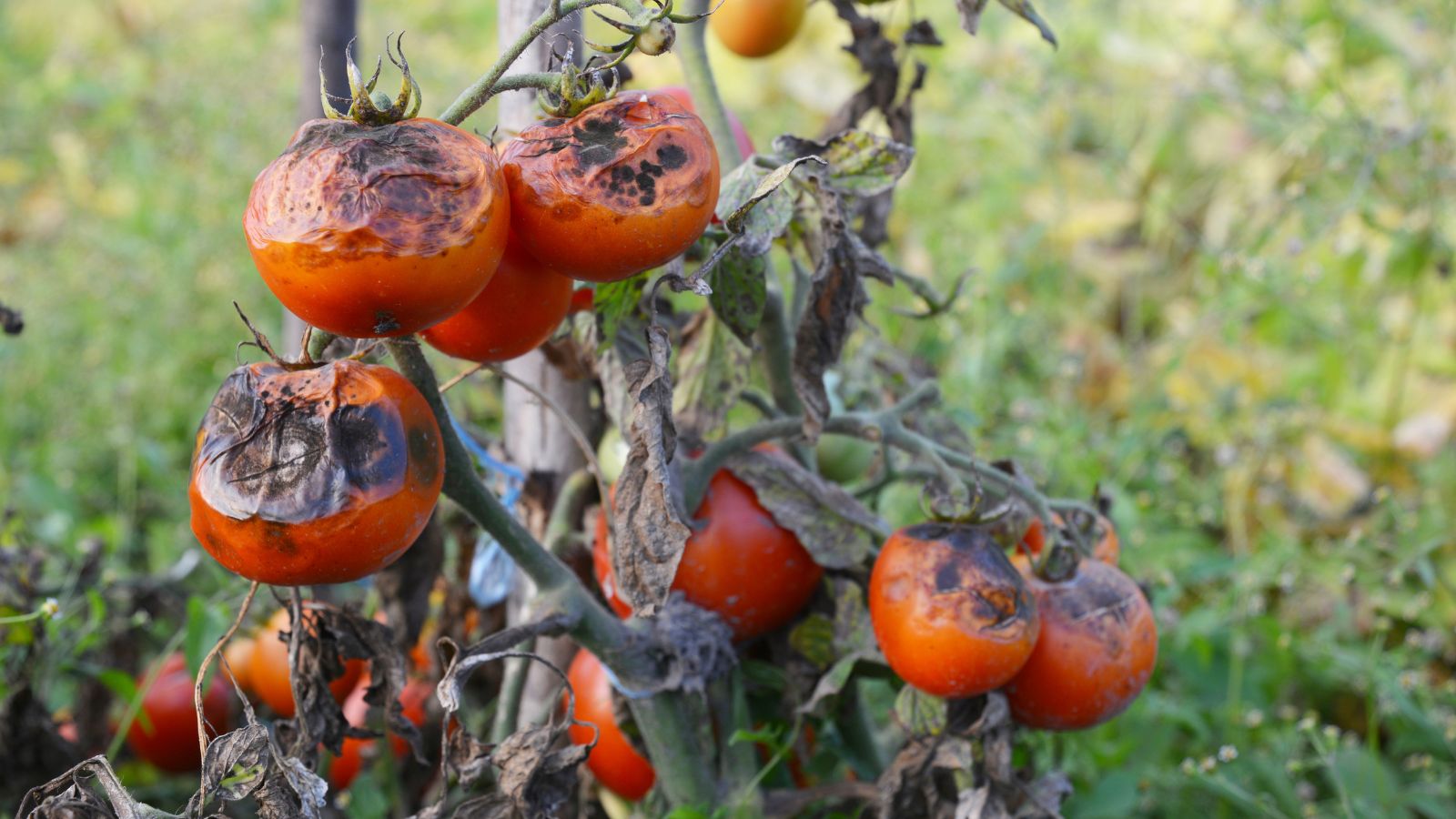 This late summer tomato disease can eventually kill your plants.
This late summer tomato disease can eventually kill your plants. Late blight is a disease caused by the oomycete Phytophthora infestans, which means it’s neither a fungus, bacteria, nor a virus. Regardless, late blight can seriously damage tomatoes and eventually kill them.
This disease is especially likely to occur when leaves are wet, so you may notice it appears after a rainy or humid period. Since the zoospores are more likely to infect crops when temperatures are in the 60s and 70s (between 16 and 26°C), the disease often shows up at the end of summer.
The main symptom of late blight is brown or gray patches on the leaves. These spots quickly spread until entire leaves become discolored and shriveled. Discolored stems are also a common symptom.
Septoria Leaf Spot
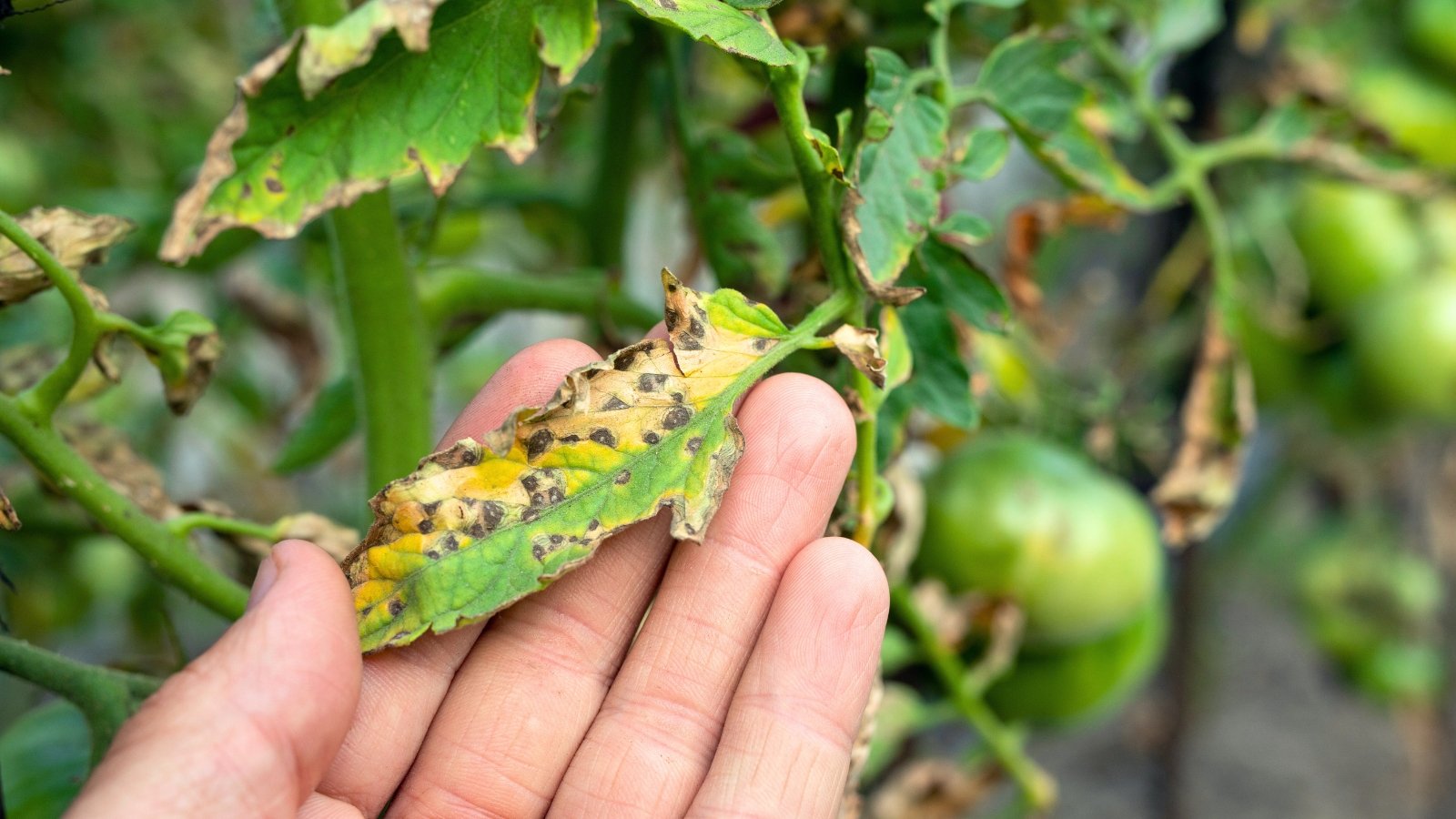 This fungal disease causes yellowing and irregular spots.
This fungal disease causes yellowing and irregular spots. Septoria leaf spot is a fungal disease that impacts older leaves first. You’ll notice small brown dots on the undersides of leaves. If you look closer, you’ll see the outer edges of the dots are darker than the interior. Eventually, the leaves will turn yellow, then entirely brown.
Early Blight
 Early blight can also affect tomatoes in late summer.
Early blight can also affect tomatoes in late summer. Although it has the word early in its name, this disease can also impact tomatoes later in the summer. Early blight is a fungal disease that thrives in moist, warm environments, so it often appears as summer arrives.
The main symptom is brown or yellow patches on the older leaves. As this late summer tomato disease spreads, entire leaves become infected and fall off.
How to Prevent Late Summer Tomato Diseases
By the time you notice spotted leaves or yellowing foliage, disease has already infected your tomatoes. You can take steps to prevent the disease from spreading, but eliminating the disease is difficult, if not impossible.
Taking steps to prevent disease is a more effective way to keep your crops healthy. Here are a few easy ways to keep pathogens from attacking your tomatoes.
Trellis Plants to Increase Airflow
 Keep tomato stems off the ground with trellises.
Keep tomato stems off the ground with trellises. Fungal diseases, including late blight, early blight, septoria leaf spot, and fusarium wilt, are all more likely to infect crops at high moisture levels. One way to keep the humidity low around your tomatoes is to trellis them.
Trellising tomato plants keeps the vines off the ground, allowing air to flow between the leaves and stems. This increased airflow allows the leaves to dry more quickly, decreasing the odds that they’ll develop late diseases.
You can choose from multiple tomato trellising methods. A simple metal tomato cage works well if you have a few determinate varieties that will only grow four or five feet tall. If you’re growing indeterminate tomatoes, place t-posts on either side, then use layers of twine to support the tomatoes as they grow.
You can also prune the stems to a single leader and attach this main stem to a tall stake or piece of suspended twine.
Choose Resistant Varieties
 Resistant varieties are less risky.
Resistant varieties are less risky. If you’ve dealt with late summer tomato diseases in the past, there’s a good chance they’ll appear again. Choosing varieties that are resistant to the disease in question is one of the best ways to protect your crops.
Plant breeders haven’t found out how to develop resistance for every disease, but you can find tomatoes that are resistant to late blight, fusarium wilt, and gray leaf spot. Even if you plant a resistant variety, it’s important to use other practices that will keep the diseases at bay.
Avoid Overhead Irrigation
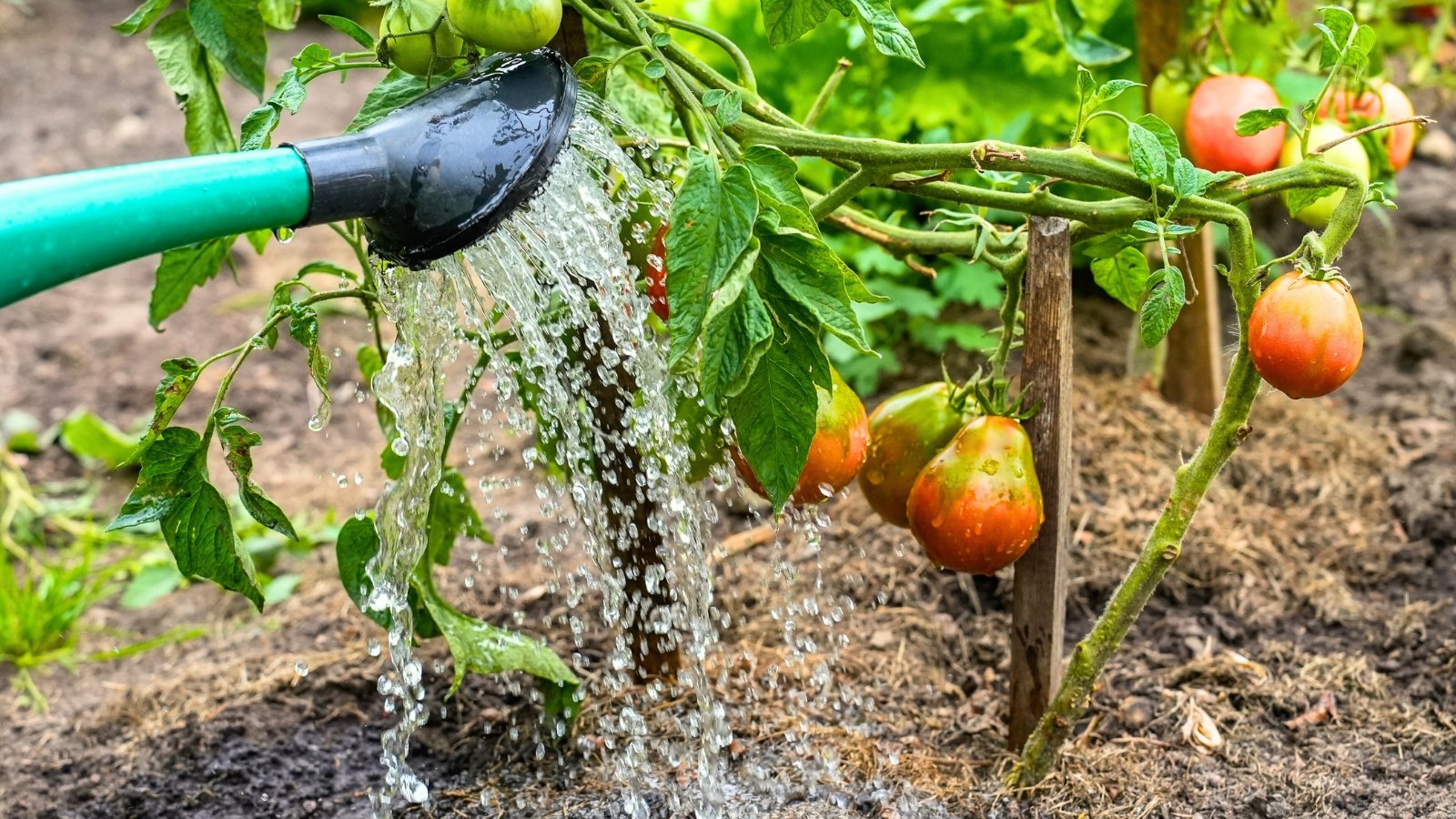 Always water the soil, not the leaves.
Always water the soil, not the leaves. Many of the major tomato mistakes growers make involve irrigation. Watering your plants the correct amount is important, but so is applying the water the proper way.
Since high humidity around the leaves encourages late summer tomato diseases, it’s important to keep your leaves as dry as possible. Avoid overhead irrigation, such as sprinklers and hoses, since these dampen the foliage.
Instead, opt for drip irrigation that applies water directly to the soil surface. You can also use a watering can or hose to apply water near the base of your plant.
Provide Proper Plant Nutrition
 Stressed tomatoes are more susceptible to disease.
Stressed tomatoes are more susceptible to disease. Tomato plants are better equipped to fight off diseases when they have all of the necessary nutrients. When tomatoes have access to all essential nutrients, they can form compounds and send signals that allow them to resist diseases.
Gardeners often focus on providing plants with the three macronutrients: nitrogen, phosphorus, and potassium. These three nutrients are essential, but so are secondary nutrients and micronutrients. Although plants only need a tiny amount of boron, molybdenum, and other trace minerals, these elements are key to fighting off late summer tomato diseases.
Applying a tomato fertilizer is a good place to start. Adding kelp extract and/or certain rock dusts will provide your plants with the necessary trace minerals.
Rotate Crops
 Don’t plant tomatoes in the same spot two seasons in a row.
Don’t plant tomatoes in the same spot two seasons in a row. Many late summer tomato diseases can lie dormant in the soil for months or years. Removing crop debris is one way to prevent the spread of disease from one season to the next, but crop rotation is another key practice to keep these diseases from infecting your plants.
Never plant tomatoes in the same place two years in a row. Ideally, you’ll grow your tomatoes in a location that was free from any type of solanaceous crop during the previous two years.
Instead of planting your tomatoes where peppers, eggplant, or tomatoes grew the previous year, place them where you grew your melons, beans, lettuce, or kale. Since these plants are in different families, they aren’t susceptible to many of the diseases that impact tomatoes.
Remove the Lower Leaves
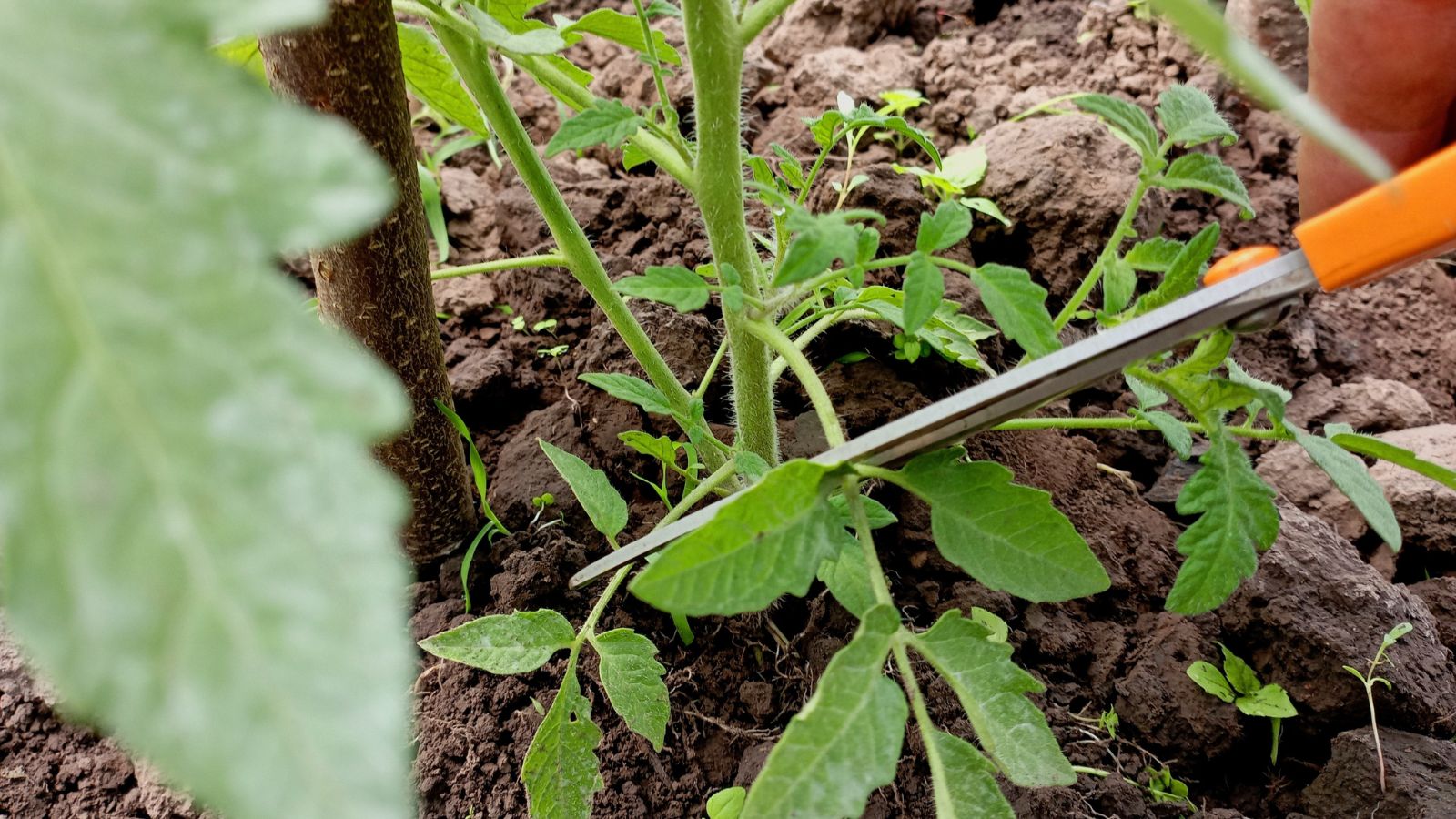 Pruning keeps disease issues in check.
Pruning keeps disease issues in check. Soil-borne diseases infect plants when the soil splashes up from the ground and onto the plant. Even if you use drip irrigation, heavy rain will splatter soil onto the lower leaves, potentially moving harmful pathogens with it.
Pruning the leaves from the bottom two feet of the stem prevents the soil from hitting them. Wait until the plants are at least two feet tall, then grab a pair of clean and sharp pruners and cut the bottom leaves where they attach to the stem. It’s important to sanitize your pruners between each plant if you’re working with diseased foliage.


 1 day ago
14
1 day ago
14
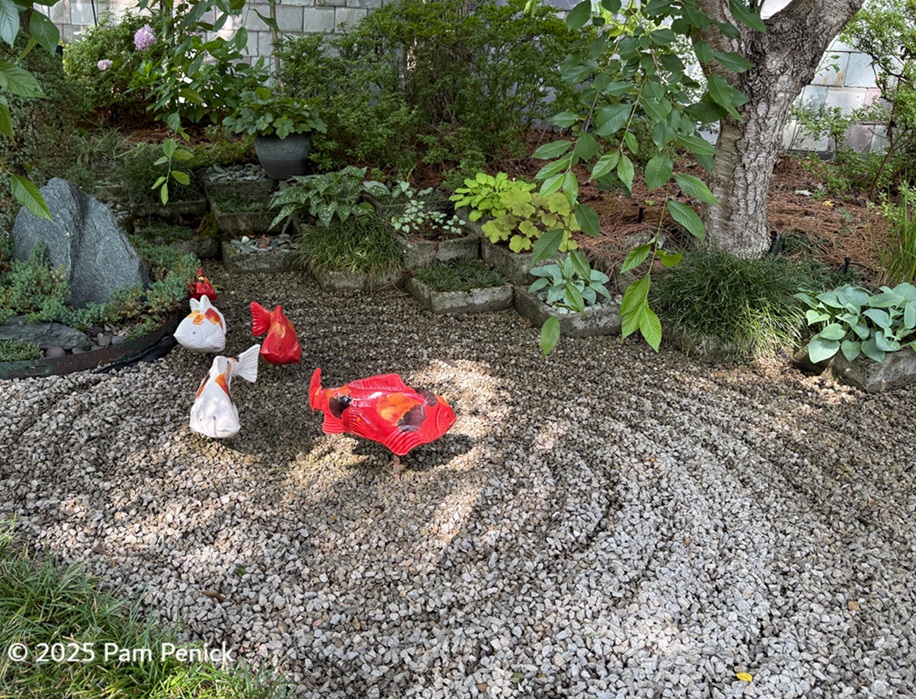
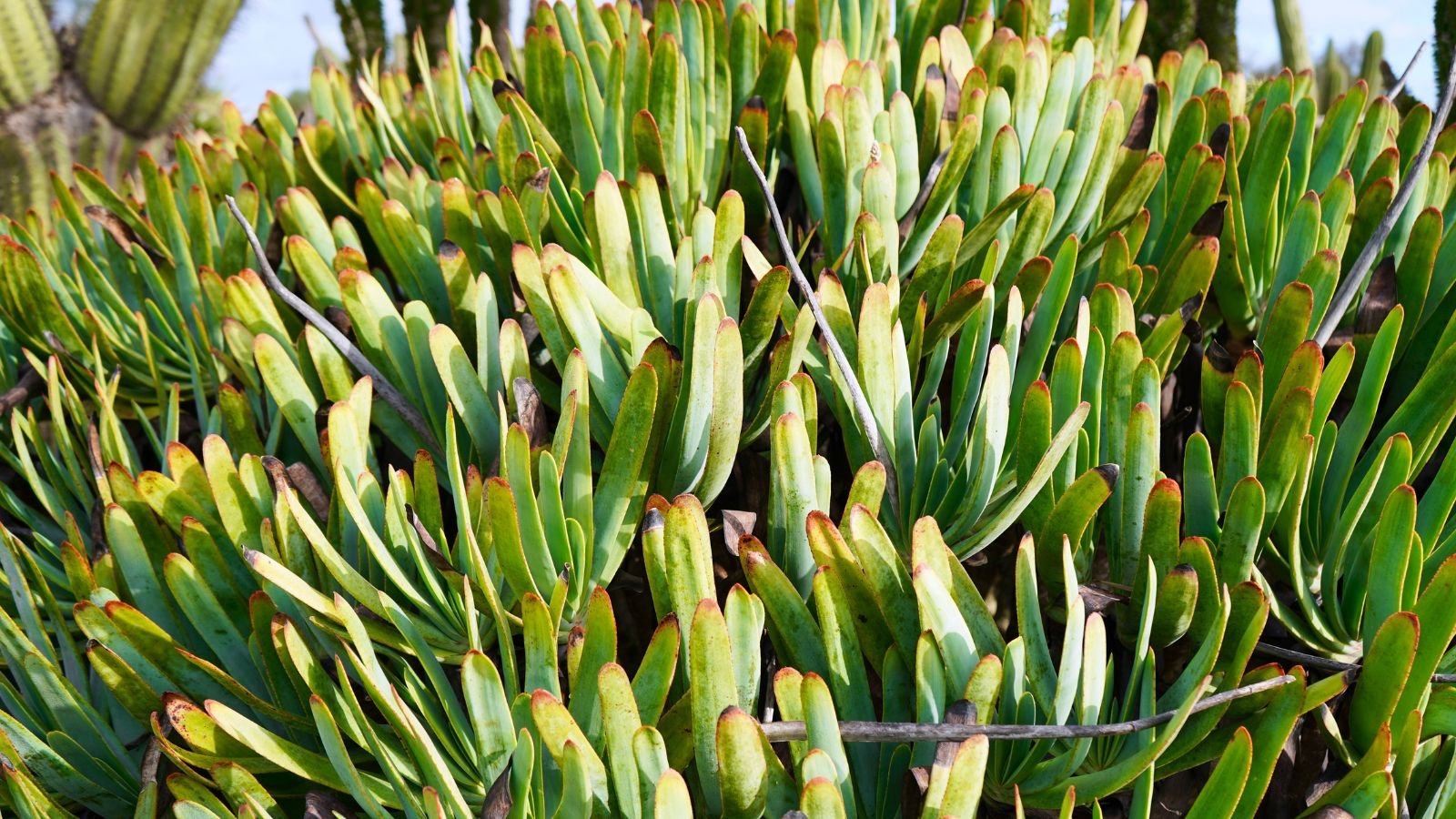




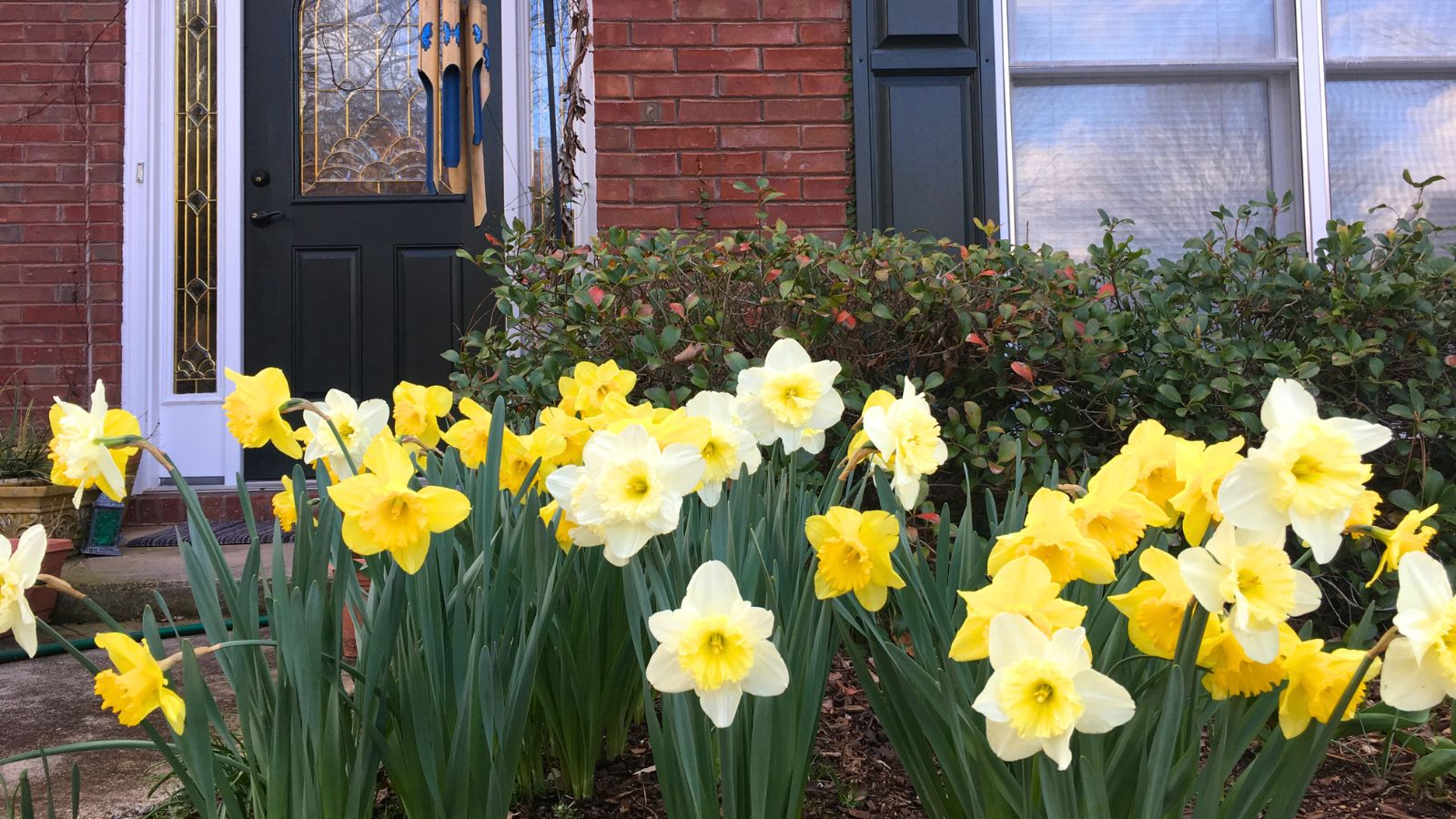














 English (US) ·
English (US) ·  French (CA) ·
French (CA) ·